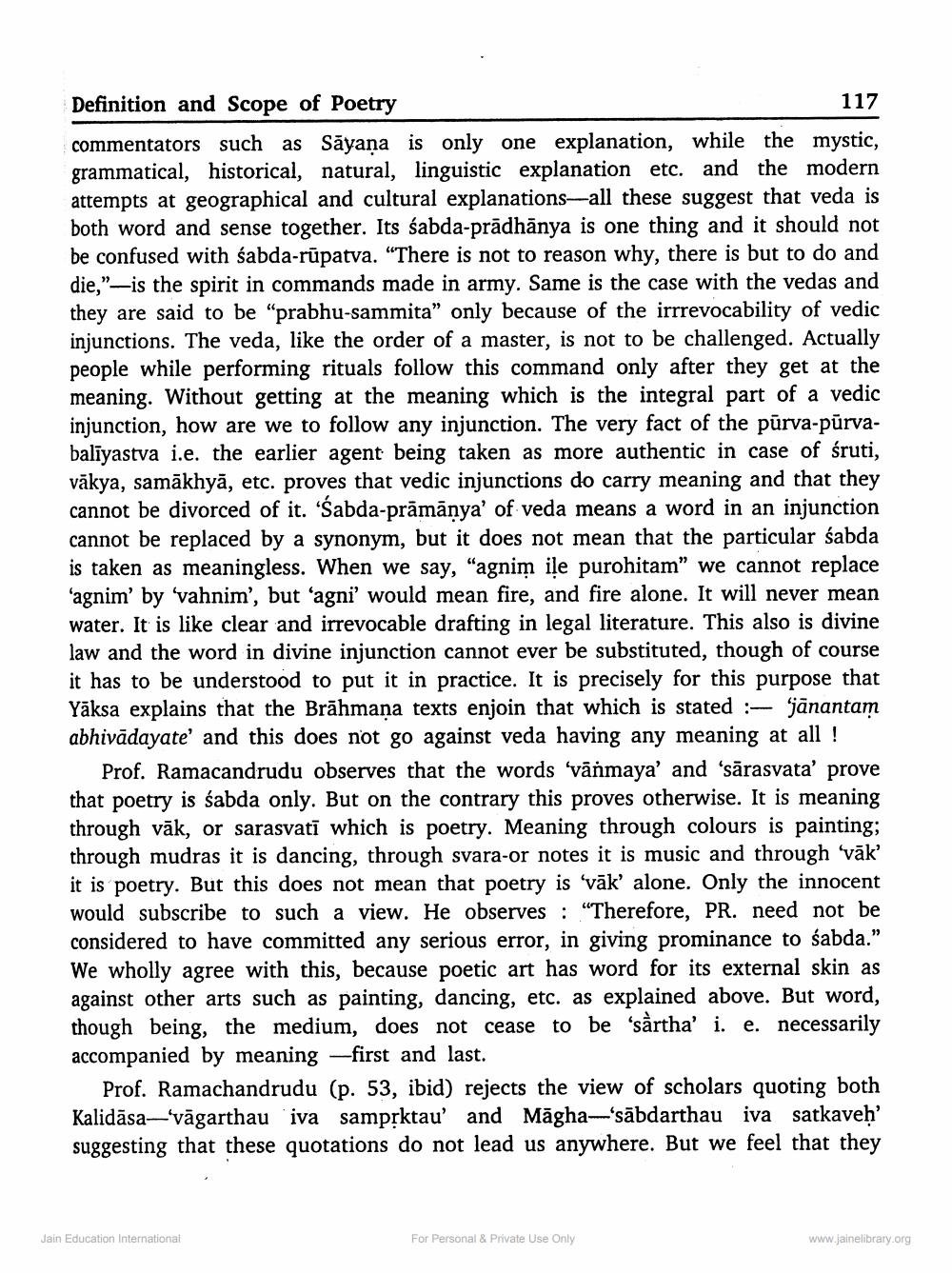________________
Definition and Scope of Poetry
117
commentators such as Sāyana is only one explanation, while the mystic, grammatical, historical, natural, linguistic explanation etc. and the modern attempts at geographical and cultural explanations--all these suggest that veda is both word and sense together. Its sabda-prādhānya is one thing and it should not be confused with sabda-rūpatva. "There is not to reason why, there is but to do and die,"—is the spirit in commands made in army. Same is the case with the vedas and they are said to be "prabhu-sammita” only because of the irrrevocability of vedic injunctions. The veda, like the order of a master, is not to be challenged. Actually people while performing rituals follow this command only after they get at the meaning. Without getting at the meaning which is the integral part of a vedic injunction, how are we to follow any injunction. The very fact of the pūrva-pūrvabalīyastva i.e. the earlier agent being taken as more authentic in case of śruti, vākya, samākhyā, etc. proves that vedic injunctions do carry meaning and that they cannot be divorced of it. 'Sabda-prāmānya' of veda means a word in an injunction cannot be replaced by a synonym, but it does not mean that the particular sabda is taken as meaningless. When we say, "agnim ile purohitam" we cannot replace 'agnim' by 'vahnim', but 'agni' would mean fire, and fire alone. It will never mean water. It is like clear and irrevocable drafting in legal literature. This also is divine law and the word in divine injunction cannot ever be substituted, though of course it has to be understood to put it in practice. It is precisely for this purpose that Yāksa explains that the Brāhmana texts enjoin that which is stated :- jānantam abhivadayate' and this does not go against veda having any meanin
Prof. Ramacandrudu observes that the words 'vānmaya' and 'sārasvata’ prove that poetry is sabda only. But on the contrary this proves otherwise. It is meaning through vāk, or sarasvati which is poetry. Meaning through colours is painting; through mudras it is dancing, through svara-or notes it is music and through 'vāk’ it is poetry. But this does not mean that poetry is 'vāk' alone. Only the innocent would subscribe to such a view. He observes: "Therefore, PR. need not be considered to have committed any serious error, in giving prominance to śabda.” We wholly agree with this, because poetic art has word for its external skin as against other arts such as painting, dancing, etc. as explained above. But word, though being, the medium, does not cease to be 'sàrtha' i. e. necessarily accompanied by meaning —first and last.
Prof. Ramachandrudu (p. 53, ibid) rejects the view of scholars quoting both Kalidāsa—'vāgarthau iva samprktau' and Māgha-'sābdarthau iva satkaveh' suggesting that these quotations do not lead us anywhere. But we feel that they
Jain Education International
For Personal & Private Use Only
www.jainelibrary.org




